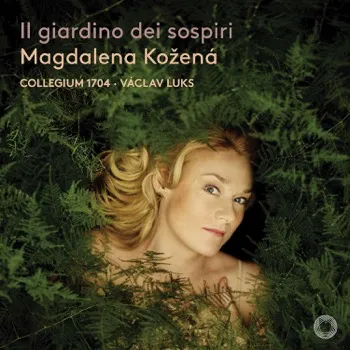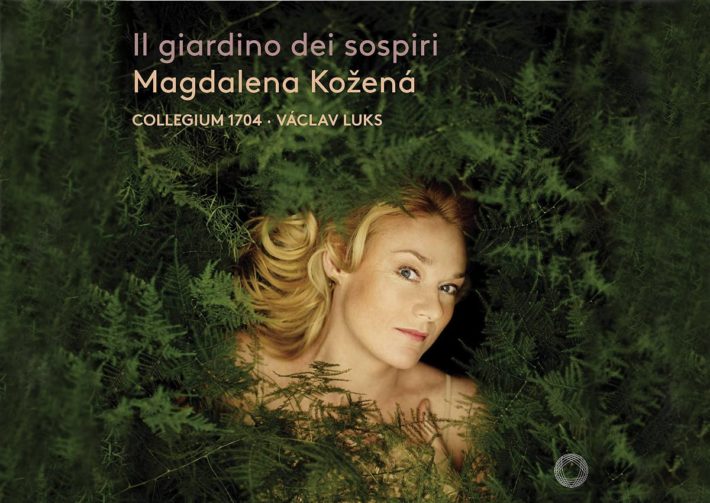This is a welcomed return of Mezzo-Soprano Magdalena Kožená to the Baroque repertoire, and her first recording for the pentagon label. Happily, there is also a sense of celebration to the music contained in this album.

The programmed is planned around dramatic love scenes from secular Cantatas, separated with instrumental music by little known Baroque composers, played by the “Collegium 1704” under Václav Luks. The group, a mid-sized period instruments ensemble with 4 violins for each of first and second violin sections, sounds impressive and homogenous, with individual touches from the continuo members. They accompany their charismatic soloist with unabashed urgency, especially impressive in the temperamental arias such as Francesco Gasparini’s “Ombre, cure sospetti” (track 11).
Kožená’s tone is as effective as ever, tender or mercurial when called for, her ornaments projected with lovely spontaneity. Compared to her previous Handel albums with Marc Minkowski or Andrea Marcon (Archive), there is an added darkness and depth to her voice not clearly evident before.
There are many discoveries here, including a complete scene from Benedetto Marcello’s “Arianna abbandonata”, which makes one want to hear the entire piece, as well as wonderful orchestral jams such as Leonardo Vinci’s “Sinfonia from Maria dolorata” (tracks 8-10). Yet the best piece, quite naturally, is the Handel Cantata “Qual ti riveggio, oh Dio” (HWV 150), which closes the album and is given in full. Try track 24, the aria “I muora, si muora” and you’ll find the album’s artists at their absolute best.
A well planned, superbly executed program of unique Baroque music, this is a highly enjoyable album. Nice recording too, made at the Church of Saint Anne, Prague, with first-class documentation.
“Il giardino dei sospiri”
Magdalena Kožená – Mezzo Soprano
Collegium 1704
Václav Luks – Conductor
Pentatone Music, CD PTC 5186725




















